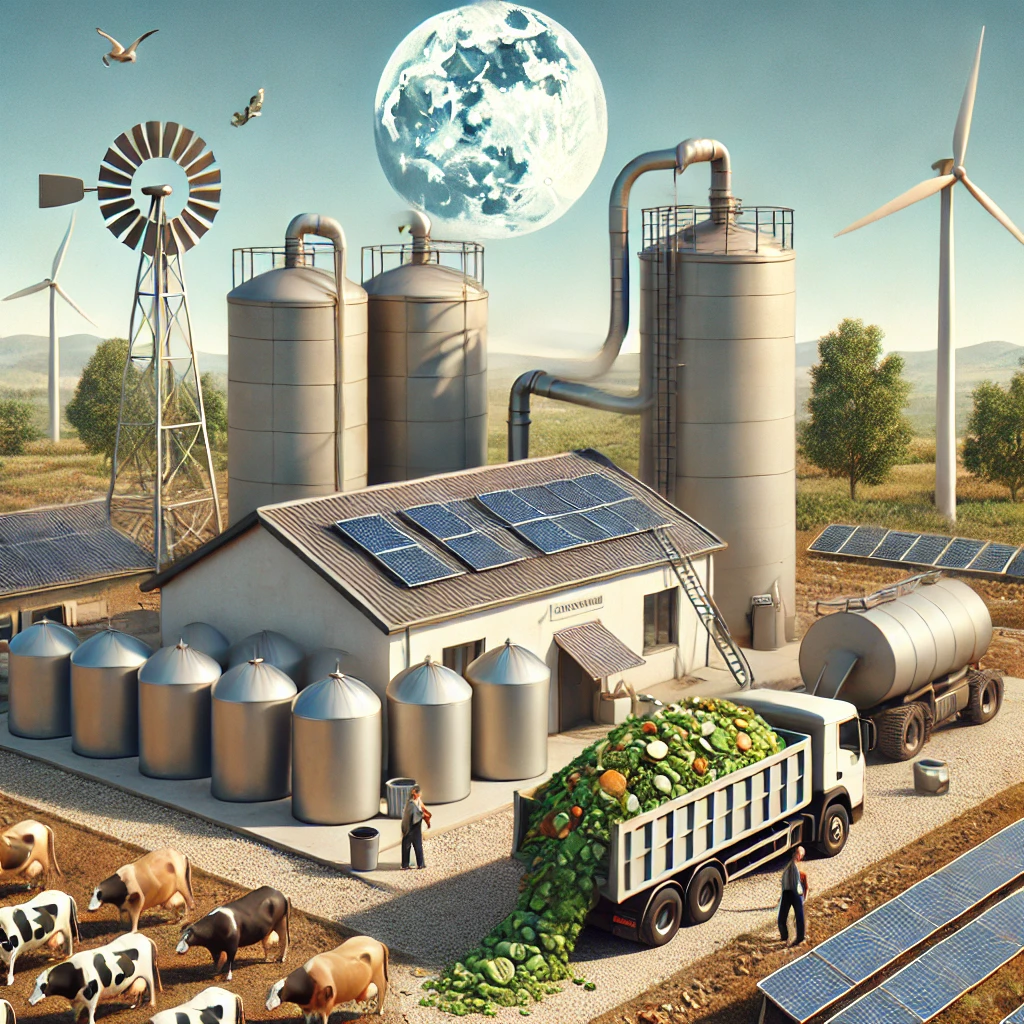As the world seeks cleaner and more sustainable energy solutions, biogas has emerged as a viable alternative to traditional fossil fuels such as LNG, CNG, and LPG. Biogas as an Alternative source of energy produced from the breakdown of organic materials such as animal dung, food waste, sewage, and agricultural residues. Given its potential in mitigating climate change and reducing dependency on non-renewable energy sources, biogas provides a viable answer
This article examines the pros and cons of biogas against other sources of energy like Liquefied Petroleum Gas (LPG), natural gas, coal, and solar energy. Large-scale feasibility and acceptance will also be discussed.

What is Biogas?
Biogas mostly consists of methane (CH₄) and carbon dioxide (CO₂) with some minor gases like hydrogen sulfide. Anaerobic digestion of organic waste under controlled environment conditions produces it. The process itself occurs when bacteria break down biodegradable material, in the absence of oxygen, added with methane-rich gas which could be captured and used for energy.
The gas can be used for cooking, heating, electricity generation, and even as fuel for vehicles. In addition to this, the residual organic matter from the anaerobic digestion process, referred to as digestate, will be of value as high-quality fertilizer.
| Feature | Biogas | LPG | Natural Gas | Coal | Solar Energy |
| Renewability | ✅ Renewable | ❌ Non-renewable | ❌ Non-renewable | ❌ Non-renewable | ✅ Renewable |
| Environmental impact | ✅ Low emissions | ⚠️ Moderate emissions | ⚠️ Moderate emissions | ❌ High Emission | ✅ Zero emissions |
| Energy Efficiency | ⚠️ Medium | ✅ High | ✅ High | ✅ High | ⚠️ Medium |
| Cost | ✅ Low in the long run | ⚠️ Price fluctuates | ⚠️ Price fluctuates | ✅ Cheap but polluting | ⚠️ High initial cost |
| Infrastructure Requirement | ⚠️ Requires digesters | ✅ Available | ✅ Pipeline needed | ✅ Existing power plant | ❌ High initial setup |
| Waste Management | ✅ Utilizes organic waste | ❌ No impact | ❌ No impact | ❌ No impact | ❌ No impact |
Advantages of biogas
- Sustainable: Being a renewable source, biogas reduces dependence on fossil fuels and energy security.
- Eco-Friendly: It releases less greenhouse gas emissions than coal and LPG, which helps mitigate climate change.
- Long-Term Cheap: Once capital expenditure is incurred for the infrastructure, it is cheap to produce biogas, and the whole process results in long-term savings.
- Waste Reduction: Biogas helps in the efficient management of organic waste, which minimizes landfill pollution and environmental hazards.
- Versatile: Biogas can be used for cooking, generating electricity, and further transportation.
- Job Creation and Economic Growth: The biogas industry thus creates jobs in waste management, engineering, and renewable sectors.
- Energy Independence: Communities, especially in rural settings, can become energy self-sufficient, thus lessening the dependence on imported fuel.
Disadvantages of biogas
- High Initial Investment: The establishment of biogas plants is hugely capital intensive because of the need for investing in digester systems and the relevant infrastructure.
- Lower Energy Density: Biogas per unit volume has lower energy content when compared to LPG and natural gas, hence larger storage facilities have to be used.
- Storage Challenges: Biogas requires specialized storage to prevent methane leaks, which can contribute to greenhouse gas emissions if not managed properly.
- Continuous Supply of Organic Waste Needed: Effective biogas production depends on a steady supply of organic materials, making it less feasible in areas with low waste availability.
- Technological and infrastructural constraints: In many areas, especially developing and transitional countries, the needed technology and competency for reasonably efficient construction of large-scale biogas plants are lacking.
Large-Scale Trends and Future Potentials
Large-scale applications in the biogas field entail a vast perspective, especially concerning agriculture, industries, and municipal waste management within this context. The countries such as Germany, Sweden, and India have successfully installed national energy strategies that incorporate biogas, demonstrating that large-scale applications are feasible.
Development of innovative biogas upgrading techniques now allows purified biogas, referred to as biomethane, to be injected into natural gas grids as a cleaner substitute for fossil fuel. Likewise, governments and organizations around the world are incentivizing biogas development, including subsidies and carbon credits and regulatory mechanisms encouraging the uptake of renewable energy.
Conclusion
Biogas is a promising alternative energy source with the potential for significantly enhanced environmental and economy. Although biogas may not completely replace LPG, natural gas, or coal in high-energy-demands, it represents an ideal solution for sustainable energy supply at rural homes, farms, and industries with organic waste.
Biogas is a significant player along with other renewable sources such as solar and wind in decarbonization, energy security, and a sustainable future. It still appears like businesses, societies, as well as individuals will have to invest rather extensively as they are to maintain, improve, and/or expand the biogas sector, in order to reap success.